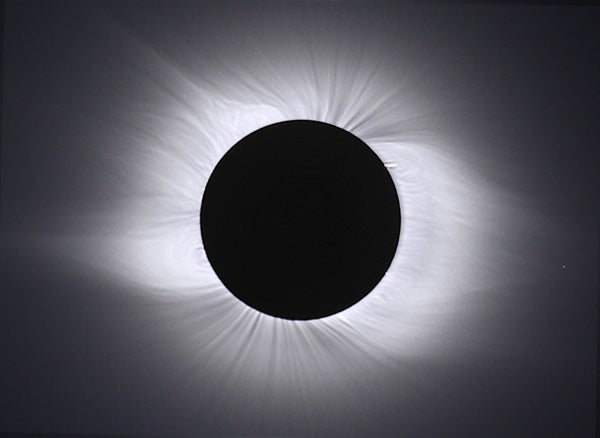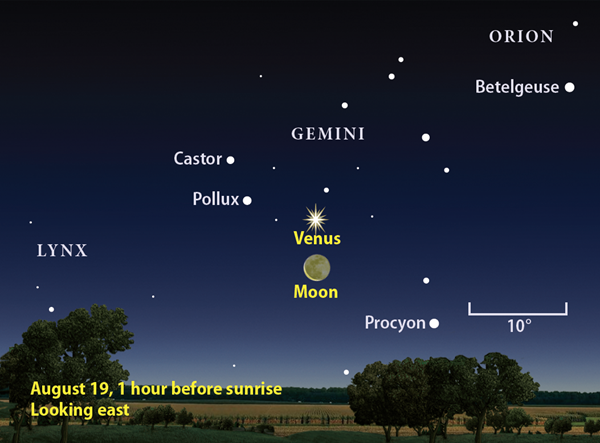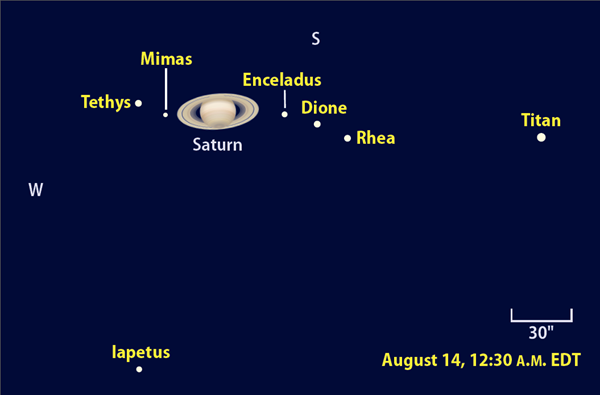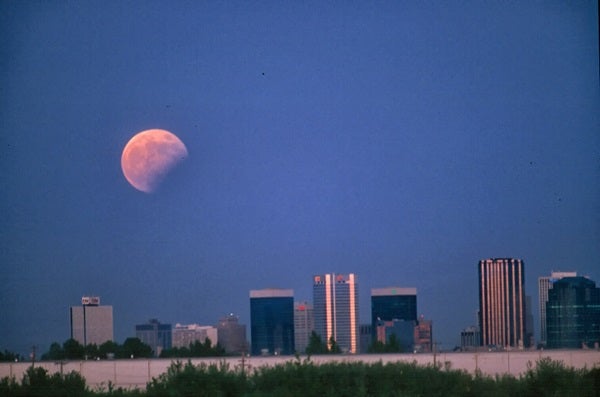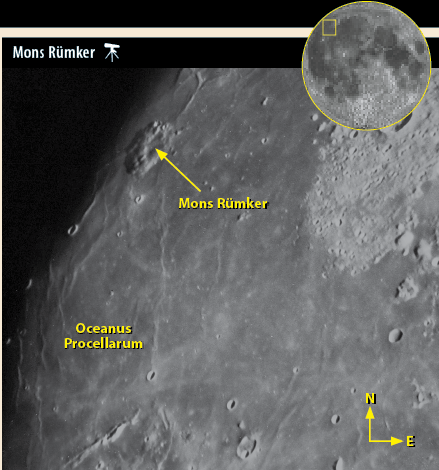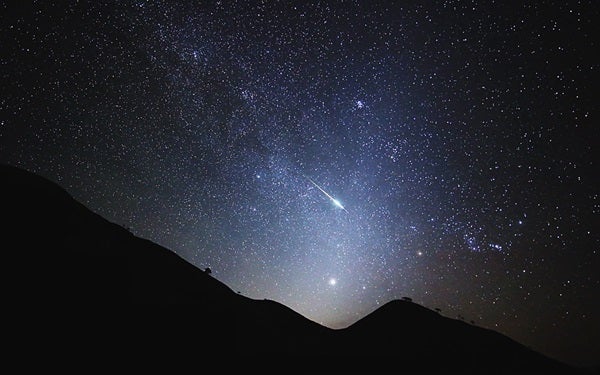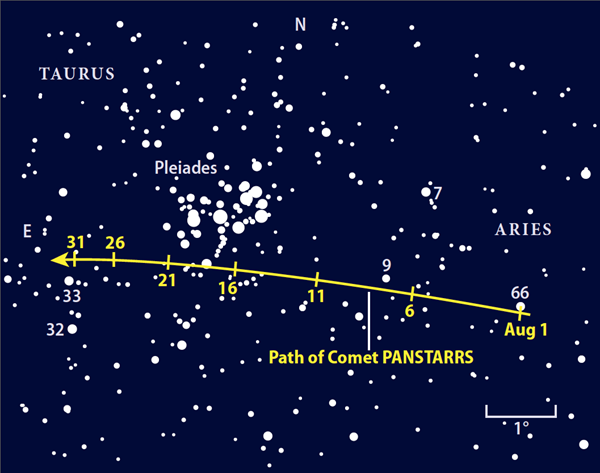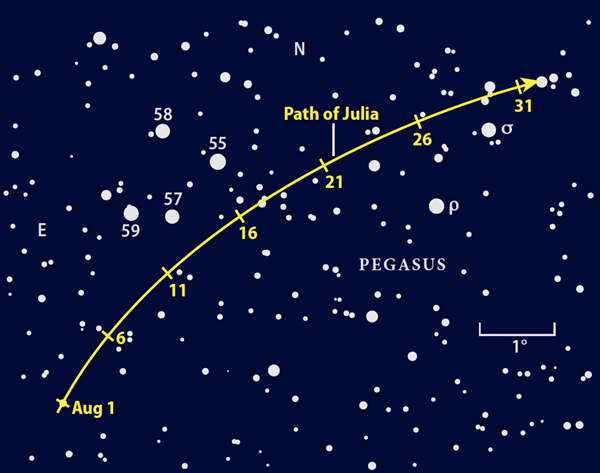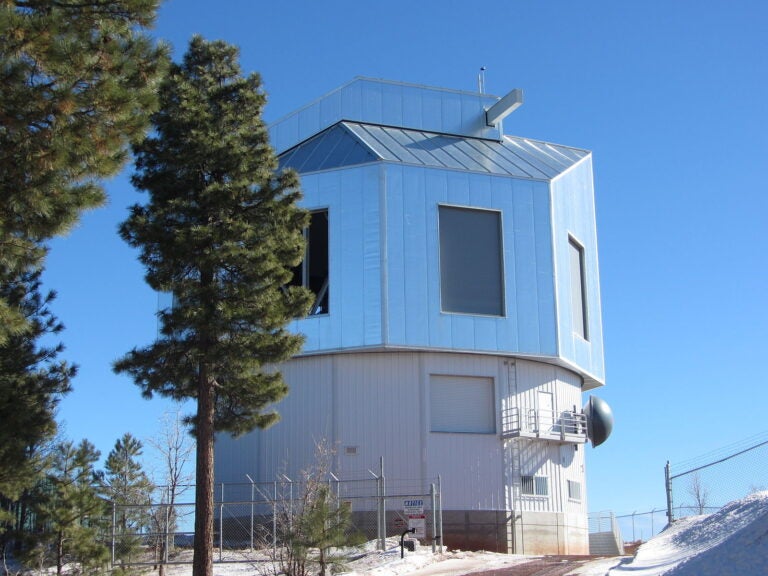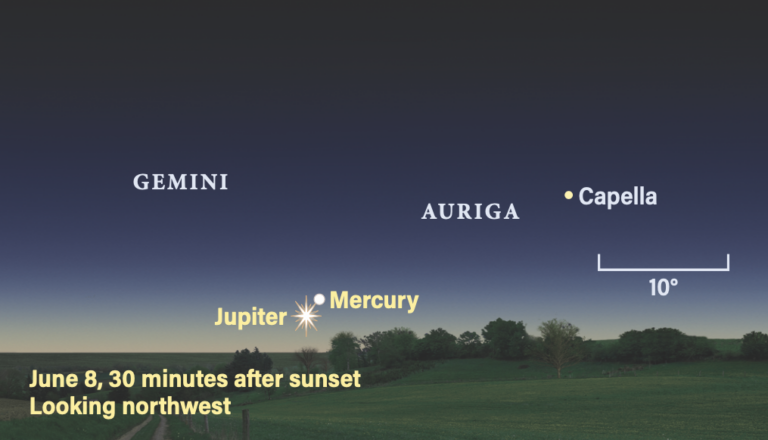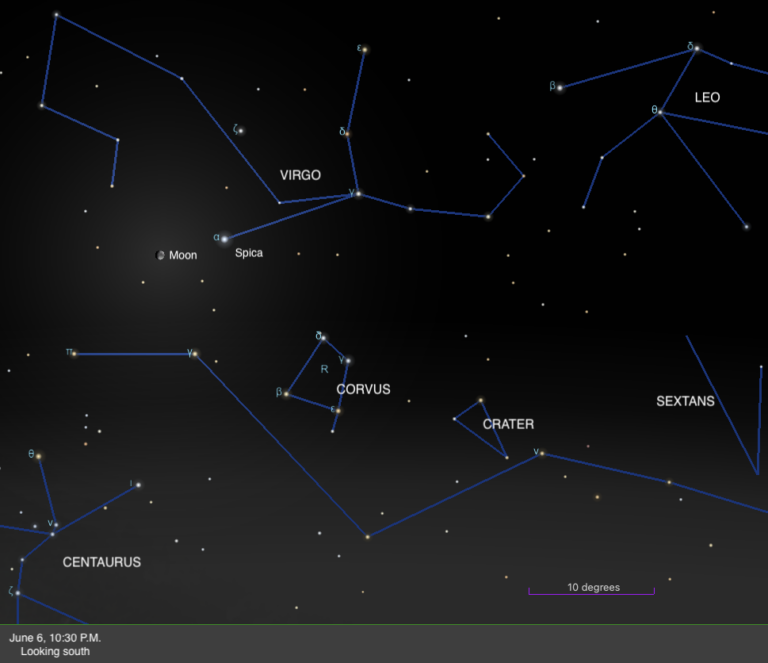Everyone in North America with a clear sky can experience at least a partial solar eclipse, with the Moon covering a larger fraction of the Sun’s disk the closer you get to the path of totality. But the difference between a total and a partial eclipse is, well, like night and day. Totality is the main event, the partial eclipse a mere sideshow. At least 90 percent of the dramatic sights take place during or just outside the brief moments of totality.
Nearly every page of this issue brings you helpful information about the eclipse and how best to experience it. But if you are a first-time eclipse chaser, pay particular attention to “Astronomy’s Atlas of Totality” on p. 54, so you can find a good viewing location, and to “A step-by-step guide to the Great American Eclipse” on p. 26, so you know what to watch for during this priceless event.
August 21 is but a single day, however. Don’t forget that August also boasts 31 nights of worthy celestial treats. Jupiter and Saturn lead the way on late-summer evenings, shining brightly and showing fine detail when viewed through a telescope. Farther out in the solar system, Uranus and Neptune show their more subtle charms best after midnight. And by the time morning twilight commences, Venus dominates the eastern sky.
But the first stop on our night-sky tour lurks low in the west shortly after sunset. Mercury appears as an inconspicuous dot against the twilight during August’s first few days. On the 1st, the innermost planet shines at magnitude 0.4 and stands 6° high a half-hour after sundown. You should be able to spot it with your naked eye, though binoculars can help you locate it initially. Mercury becomes harder to see with each passing day as it dims and dips closer to the horizon. By August 8, it glows at magnitude 0.9 and appears just 3° high 30 minutes after sunset. That’s about as long as observers at mid-northern latitudes will be able to track it.
If you swing a scope toward Mercury, you’ll see a relatively large, crescent-shaped disk. On the 1st, the planet appears 8.1″ across and 42 percent lit. By the 8th, the disk spans 9.2″ and the Sun illuminates 30 percent of its Earth-facing hemisphere.
Look to the upper left of Mercury and you can’t help but see Jupiter. The solar system’s largest planet shines at magnitude –1.9 in early August. It stands out in the deepening twilight and doesn’t set until 11 p.m. local daylight time. Jupiter resides in Virgo, some 8° northwest of that constellation’s brightest star, 1st-magnitude Spica.
Jupiter’s eastward motion against the stellar backdrop continues all month. By the 31st, it has pulled within 4° of Spica, though the pair lies lower and sets around the time twilight ends.
August will bring your last good looks at Jupiter through a telescope during this apparition. On the 1st, the giant spans 34″ and stands high enough an hour after sunset to deliver sharp views of cloud features. But the planet’s lower altitude late in the month means you have to look through more of Earth’s atmosphere, making fine detail hard to see.
Saturn stands about 30° above the southern horizon as twilight comes to a close. The magnitude 0.3 planet appears against the backdrop of Ophiuchus. No star in this region appears nearly as bright; its closest competitor is 1st-magnitude Antares in Scorpius, which lies 13° to the west-southwest. Closer in, 3rd-magnitude Theta (θ) Ophiuchi resides 3° due south of Saturn. The planet remains nearly stationary relative to these background stars all month.
Your best views through a telescope come when the world lies high in the south as darkness falls. Even the smallest scope shows that Saturn’s disk is not a perfect circle. The planet’s rapid spin and gaseous nature gives it an equatorial bulge. On August 15, the giant spans 17.4″ across the equator and 16.1″ through the poles.
Small scopes also reveal Saturn’s family of moons. The brightest, 8th-magnitude Titan, shows up through any instrument. You can find it north of Saturn on August 10 and 26 and south of the ringed world on the 2nd and 18th. Closer in lies a trio of 10th-magnitude satellites — Tethys, Dione, and Rhea — visible through 4–inch scopes.
Mimas and Enceladus glow more faintly and seem to hug the outer edge of the rings. You’ll need an 8-inch instrument to spy them when their orbits carry them farthest from the planet. Perhaps the best opportunity this month comes the night of August 13/14, when Enceladus reaches greatest eastern elongation less than two hours after Mimas reaches greatest western elongation. The chart above should help you to identify them relative to the brighter moons.
That same night, look for outer Iapetus 2′ north of Saturn. This two-faced moon — highly reflective ice covers one hemisphere, nearly black dirt the other — then glows at 11th magnitude. It appears slightly brighter early in the month when it lies west of the planet and its icy side faces Earth, and dims as it heads east after mid-August.
Distant Neptune will reach opposition and peak visibility in early September, but the view in August is nearly as good. The planet rises in midevening and climbs some 30° high in the southeast by midnight. You can find the magnitude 7.8 object through binoculars or a telescope against the backdrop of Aquarius. On August 1, it lies 2° east of 4th-magnitude Lambda (λ) Aquarii and in a direct line with the 6th-magnitude stars 81 and 82 Aqr. Neptune moves slowly westward during August and ends the month 1.3° east of Lambda.
Uranus rises nearly two hours after Neptune along with the stars of Pisces the Fish. The closer planet glows at magnitude 5.8 and shows up easily through binoculars. (It’s even bright enough to see with the naked eye under a dark sky.) The best time to look for Uranus is an hour or two before morning twilight begins, when it lies more than halfway to the zenith in the southeastern sky.
Uranus remains 1° north of 4th-magnitude Omicron (ο) Piscium all month. If you center the star in your binoculars’ field of view, the planet will be the bright object just above it. A telescope can confirm a sighting by showing Uranus’ distinct blue-green color on a disk that spans 3.6″.
While it takes some effort to track down the faint murmurs of Uranus and Neptune, Venus shouts its presence. The brilliant “morning star” rises in darkness more than 21/2 hours before the Sun and climbs some 20° above the eastern horizon an hour before sunup all month. Shining at magnitude –4.0, Venus is impossible to miss on any clear morning.
The inner planet begins August in western Gemini and moves eastward quickly. Look for a waning crescent Moon a few degrees below Venus on August 19. Two mornings later, the planet passes 7° south of Gemini’s brightest star, magnitude 1.2 Pollux. Venus crosses the border into Cancer during the daylight hours of August 25, and ends the month barely 1° from the fabulous Beehive star cluster (M44).
When viewed through a telescope, Venus shows a relatively small, gibbous disk. On August 1, it appears 15″ across and 74 percent illuminated. By the 31st, its apparent diameter has shrunk to 12″ while its phase has waxed to 83 percent lit.
Mars was in conjunction with the Sun in late July, and it remains lost in our star’s glare throughout August. It will return to view before dawn next month.
Most of the world outside the Americas can view a partial lunar eclipse the night of August 7/8. The Moon’s southern edge enters Earth’s dark shadow at 17h22m UT on the 7th and exits at 19h19m UT. Greatest eclipse occurs at 18h20m UT, when 25 percent of the Moon’s diameter resides in Earth’s shadow.
| WHEN TO VIEW THE PLANETS | ||
| Evening Sky | Midnight | Morning Sky |
| Mercury (west) | Saturn (southwest) | Venus (east) |
| Jupiter (west) | Uranus (east) | Uranus (south) |
| Saturn (south) | Neptune (southeast) | Neptune (southwest) |
| Neptune (east) | ||
What a sight the Moon must have been a few billion years ago, when lava surged from the lunar interior and spread across its huge basins. As the surface cooled and solidified, local hot spots continued to ooze magma. These upwellings gradually built modest hills that appear starkly different from the mountain ranges and crater rims that formed around impact sites.
The most extensive complex of these lunar hills comes into view on the August 4 waxing gibbous Moon. Early that evening, Mons Rümker lies on the terminator — the dividing line between lunar day and night. As the night wears on, sunlight reveals the mountain’s full extent. The jumbled complex of hills spans about 45 miles and doesn’t look anything like the rim of a large crater. Instead, Mons Rümker gives an impression as if the Moon has hives.
To locate Mons Rümker, start at the Moon’s brightest feature: Aristarchus Crater. Then slide north along the terminator through Oceanus Procellarum (Ocean of Storms) until you reach the hills. Under the rising Sun, these gentle hills cast long shadows. Just 24 hours later, however, the shadows have all but disappeared. We then see the flat central part of the complex, which some lunar scientists suspect is a caldera formed when the peak collapsed.
Nearly everyone considers the Perseid meteor shower to be the finest of the year. Not only does it deliver a consistently high rate of “shooting stars,” but it also occurs during the warm summer nights that are conducive to extended observing sessions.
Unfortunately, a bright waning gibbous Moon interferes with the Perseids’ August 12 peak this year. Typically, this shower can produce up to 150 meteors per hour under a dark sky. In 2017, the Moon will wipe out the fainter ones, reducing the overall rate by 80 to 90 percent. Still, 15 to 30 meteors in an average hour is nothing to sneeze at, so keep your eyes to the sky for bright Perseids radiating from Perseus the Hero before dawn on the 12th.
Although astronomers expect Comet PANSTARRS (C/2015 ER61) to glow at an unimpressive 9th magnitude in August, it should be fairly easy to find. This deep-space visitor remains within a few degrees of the Seven Sisters — the Pleiades star cluster (M45) — all month. The comet passes less than 1° south of the cluster from August 14 to 21. For the best views, hunt for PANSTARRS in August’s first few nights or after the midmonth, when the Moon is out of the predawn sky.
When astronomers discovered this object in March 2015, they classified it as an asteroid on a highly eccentric orbit. But within a few months, this “space rock” started showing signs of cometary activity. PANSTARRS’ path through the solar system carried it nearly tangent to Earth’s orbit in May, but we were then one-quarter of a year behind it. If our planet had been three months farther along in its orbit, we would have had a naked-eye comet all night.
Two other comets are not as well placed. Comet Johnson (C/2015 V2) should glow at 8th magnitude as it heads south from Centaurus into Lupus. Unless you live far enough south that you can easily see the bottom of Scorpius, Johnson won’t be worth the effort. Meanwhile, Comet 71P/Clark glows at 10th magnitude as it slides through southern Scorpius, passing less than 1° from magnitude 1.6 Shaula and the 7th-magnitude globular cluster NGC 6441 in August’s final two weeks.
Although few high-numbered asteroids ever get brighter than 10th magnitude, 89 Julia reaches magnitude 9.0 in late August. Your signpost for finding this solar system wanderer is a squashed box of four 5th-magnitude stars: 55, 57, 58, and 59 Pegasi. The box lies 6° south of magnitude 2.5 Markab (Alpha [α] Pegasi), the star at the southwestern corner of the Great Square, and fits beautifully in a finder scope’s field of view.
When hunting asteroids, patterns are your friend. At first, the background stars here seem to be a hodgepodge of brightnesses. But this is an advantage compared with the hordes of nearly equal stars you find in the Milky Way star fields of Sagittarius, for example, where it’s easy to get lost in the forest.
Use the chart below to target Julia’s position, then make a sketch of four or five stars and label the one you think is the asteroid. Come back a night or two later to see that the dot has moved. On the mornings of August 17, 24, 29, and 30, Julia passes close enough to field stars that you should notice its displacement after three hours.
French astronomer Édouard Stephan discovered Julia in 1866, but he is better known for detecting Stephan’s Quintet, a tight group of five galaxies.

